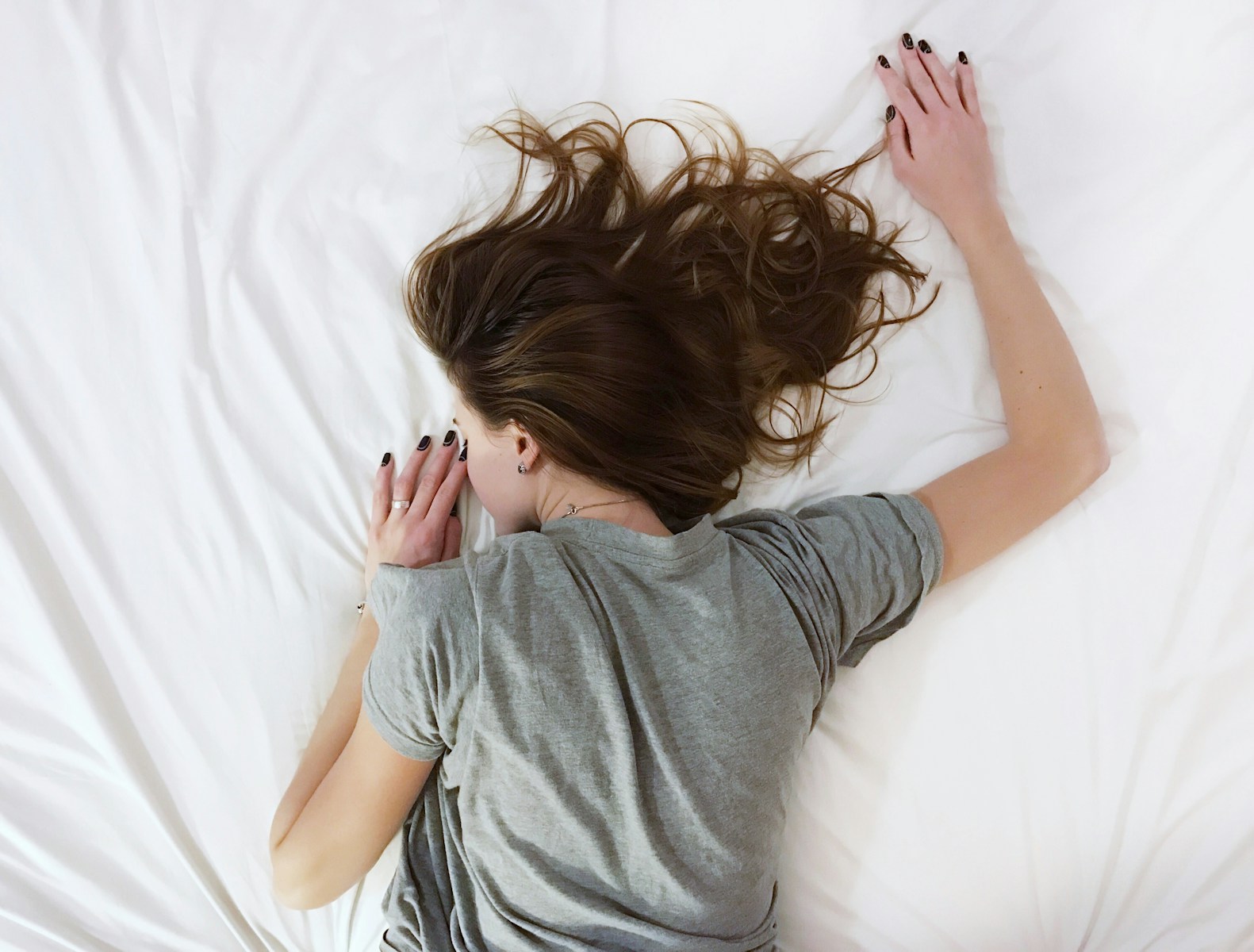Creating a relaxing sleep environment is fundamental to achieving restorative sleep, which is essential for overall health and well-being. The bedroom serves as a sanctuary where the mind and body can unwind after a long day. A well-designed sleep environment can significantly influence the quality of sleep, impacting everything from mood and cognitive function to physical health.
Research has shown that individuals who prioritize their sleep environment often experience deeper, more restful sleep, leading to improved performance in daily activities and a greater sense of well-being. A relaxing sleep environment encompasses various elements, including aesthetics, comfort, and tranquility. The colors on the walls, the arrangement of furniture, and even the choice of decor can all contribute to a calming atmosphere.
Soft, muted colors like blues, greens, and pastels are often recommended for bedrooms as they evoke feelings of serenity. Additionally, minimizing clutter and distractions can help create a peaceful space conducive to relaxation. When the environment is tailored to promote calmness, it becomes easier to drift off into a deep slumber, allowing the body to rejuvenate and recover.
Key Takeaways
- A relaxing sleep environment is crucial for overall well-being and quality of sleep.
- Choosing the right bedding and mattress can significantly impact the comfort and support of your sleep environment.
- Controlling light and noise is essential for creating a peaceful and restful atmosphere in the bedroom.
- Maintaining optimal temperature and air quality can contribute to a more comfortable and relaxing sleep environment.
- Decluttering and organizing the bedroom can help reduce stress and promote a sense of calm before bedtime.
Choosing the Right Bedding and Mattress
Selecting the right bedding and mattress is crucial for enhancing sleep quality. A mattress that provides adequate support while conforming to the body’s natural curves can alleviate pressure points and reduce discomfort during the night. There are various types of mattresses available, including memory foam, innerspring, latex, and hybrid options.
Memory foam mattresses are particularly popular due to their ability to contour to the body, providing personalized support and minimizing motion transfer for couples. In contrast, innerspring mattresses offer a more traditional feel with varying levels of firmness based on coil count and design. Bedding also plays a significant role in creating a comfortable sleep environment.
The choice of sheets, blankets, and pillows can affect not only comfort but also temperature regulation throughout the night. Natural materials such as cotton or linen are often preferred for sheets due to their breathability and softness. Additionally, investing in high-quality pillows that suit individual sleeping positions—whether back, side, or stomach—can help maintain proper spinal alignment and reduce neck pain.
The combination of an appropriate mattress and bedding tailored to personal preferences can transform the sleep experience into one that is both restorative and enjoyable.
Controlling Light and Noise
Light and noise are two critical factors that can disrupt sleep quality. Exposure to light, particularly blue light emitted by screens, can interfere with the body’s natural circadian rhythms by inhibiting melatonin production. To create an optimal sleep environment, it is essential to control light levels in the bedroom.
Blackout curtains or shades can effectively block out external light sources, such as streetlights or early morning sun, allowing for a darker sleeping space that promotes deeper sleep. Additionally, using dimmable lights or bedside lamps with warm-toned bulbs can help signal to the body that it is time to wind down. Noise is another significant disruptor of sleep.
Even subtle sounds can prevent individuals from reaching deeper stages of sleep, leading to feelings of fatigue upon waking. To mitigate noise disturbances, consider using white noise machines or fans that produce a consistent sound that masks sudden noises from outside or within the home. Earplugs can also be an effective solution for those who are particularly sensitive to sound.
By addressing both light and noise levels in the bedroom, individuals can create a more serene atmosphere that fosters uninterrupted rest.
Temperature and Air Quality
| Location | Temperature (°C) | Air Quality Index |
|---|---|---|
| New York | 25 | 78 |
| London | 18 | 65 |
| Tokyo | 30 | 85 |
The temperature of the bedroom plays a pivotal role in achieving quality sleep. Studies suggest that the ideal sleeping temperature for most individuals falls between 60°F and 67°F (15°C to 19°C). When the room is too hot or too cold, it can lead to discomfort and frequent awakenings throughout the night.
To maintain a comfortable temperature, consider using adjustable thermostats or fans to regulate airflow. Additionally, breathable bedding materials can help wick away moisture and keep the body cool during warmer months. Air quality is equally important in promoting restful sleep.
Poor air quality can lead to respiratory issues and allergies that disrupt sleep patterns. Ensuring proper ventilation in the bedroom is essential; this can be achieved by opening windows when weather permits or using air purifiers equipped with HEPA filters to remove allergens and pollutants from the air. Incorporating houseplants that improve air quality—such as snake plants or peace lilies—can also enhance the overall atmosphere of the bedroom.
By focusing on both temperature control and air quality, individuals can create an environment that supports uninterrupted sleep.
Decluttering and Organizing the Bedroom
A cluttered bedroom can contribute to feelings of stress and anxiety, making it difficult to relax and fall asleep. Organizing the space not only enhances its aesthetic appeal but also promotes a sense of calmness that is conducive to restful sleep. Start by assessing items in the bedroom; remove anything that does not serve a purpose or bring joy.
This process may involve decluttering surfaces such as nightstands, dressers, and floors to create a more open and inviting space. Storage solutions play a vital role in maintaining an organized bedroom. Utilizing under-bed storage bins or decorative baskets can help keep belongings out of sight while still being easily accessible.
Additionally, establishing designated areas for specific items—such as books, clothing, or personal items—can streamline organization efforts. A tidy environment fosters mental clarity and relaxation, allowing individuals to focus on winding down rather than being distracted by disarray.
Incorporating Relaxing Scents
The power of scent in influencing mood and relaxation cannot be overstated. Aromatherapy has been used for centuries as a means of promoting relaxation and enhancing sleep quality. Certain scents have been shown to have calming effects on the mind and body; for instance, lavender is widely recognized for its ability to reduce anxiety and improve sleep quality.
Incorporating essential oils into the bedroom environment can be achieved through diffusers, pillow sprays, or scented candles. In addition to lavender, other scents such as chamomile, sandalwood, and bergamot can also promote relaxation. Experimenting with different fragrances allows individuals to discover which scents resonate most with them personally.
Creating a calming olfactory environment not only enhances the overall ambiance of the bedroom but also signals to the brain that it is time to unwind and prepare for sleep.
Creating a Technology-Free Zone
In today’s digital age, technology often infiltrates our personal spaces, including bedrooms. The presence of electronic devices such as smartphones, tablets, and televisions can disrupt sleep patterns due to their stimulating nature and blue light emissions. Establishing a technology-free zone in the bedroom is essential for promoting relaxation and improving sleep quality.
This may involve designating specific areas for devices outside of the bedroom or implementing a “no screens” rule during bedtime hours. To facilitate this transition, consider creating alternative activities that promote relaxation before bed—such as reading a physical book, practicing meditation, or engaging in gentle stretching exercises. By removing technology from the equation, individuals can cultivate an environment that encourages mindfulness and tranquility, ultimately leading to more restful nights.
Establishing a Relaxing Bedtime Routine
A consistent bedtime routine serves as an essential component in signaling to the body that it is time to wind down for sleep. Establishing rituals that promote relaxation can help ease the transition from wakefulness to slumber. This routine may include activities such as taking a warm bath or shower, practicing deep breathing exercises, or engaging in gentle yoga stretches.
These calming practices not only prepare the body for rest but also signal to the mind that it is time to shift gears. In addition to physical activities, incorporating mindfulness techniques into a bedtime routine can further enhance relaxation. Techniques such as journaling or gratitude practices allow individuals to reflect on their day and release any lingering thoughts or worries before sleep.
By consistently following a relaxing bedtime routine, individuals can train their bodies to recognize cues for sleep readiness, ultimately leading to improved sleep quality over time.





